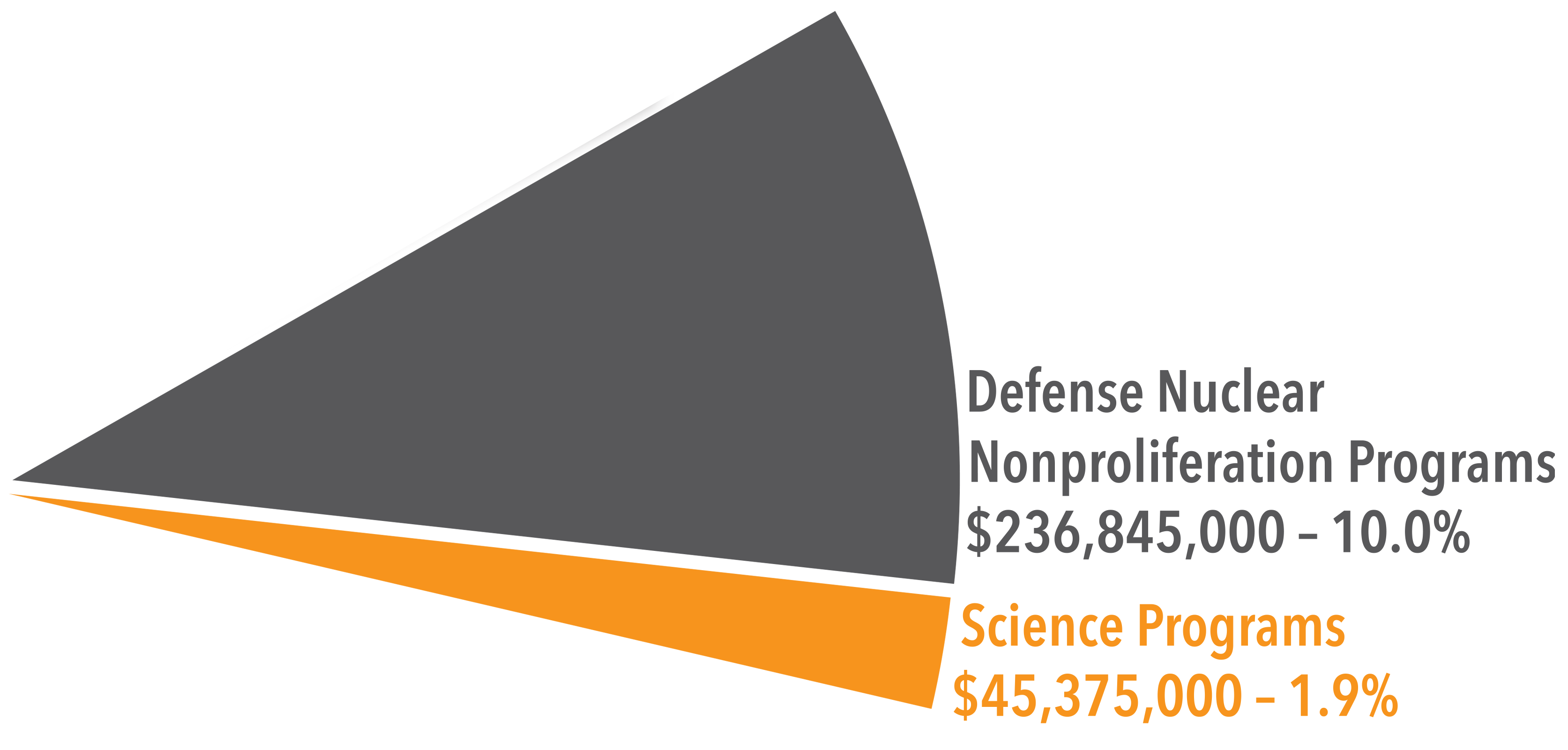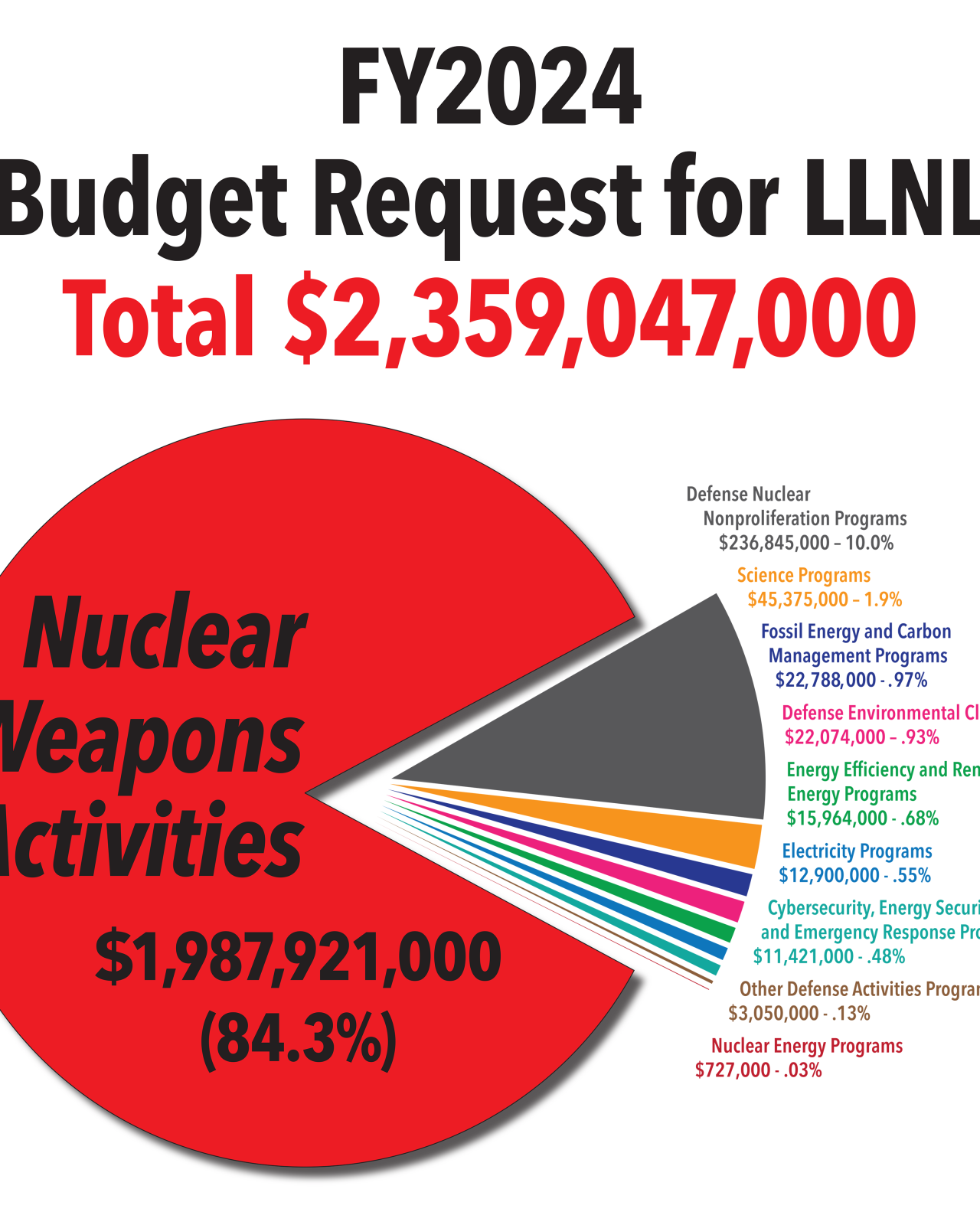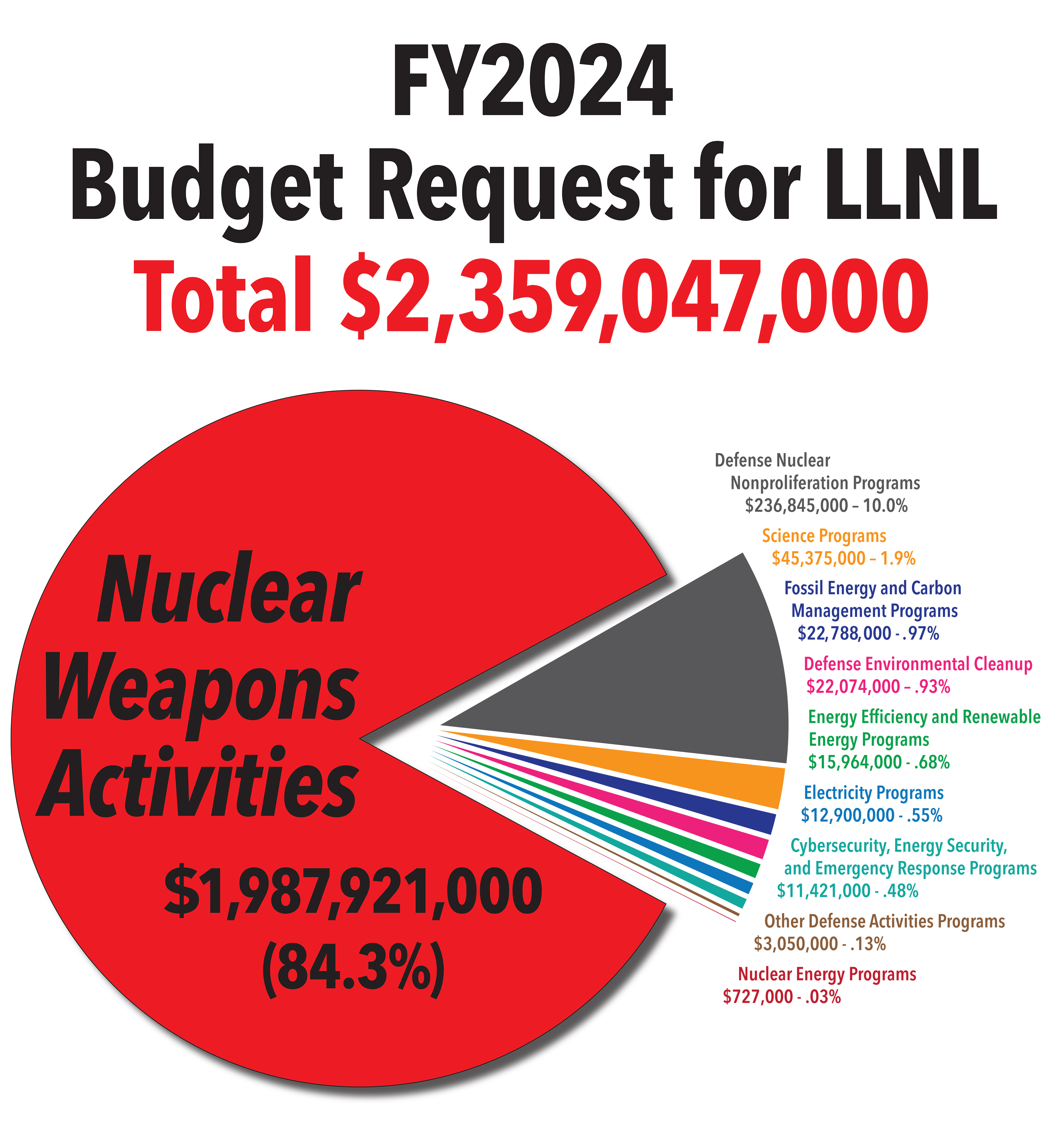As the United States debates paying its prior year bills (the debt) and some members of Congress want draconian cuts to social programs that make up less than 15% of the federal budget, military spending continues to spiral out of control.
The President’s Fiscal Year (FY) 2024 budget request for military programs in the Pentagon and the Department of Energy (DOE) stands at $886 billion. Congress is expected to increase it, rather than chop it, no matter the outcome of the debt ceiling crisis.
The Livermore Lab budget for the coming year reflects this overall trend. Nearly all of the money is for the DOE National Nuclear Security Administration (NNSA) budget line called nuclear weapons activities. As you can see in the pie chart we created from the DOE’s own numbers, a whopping 84% of Livermore’s budget is for nuclear weapons, totaling roughly $2 billion. Notably, this is a plus-up over last year.
 Livermore’s second largest program, Defense Nuclear Nonproliferation comes in at 10%. Civilian science programs get a tiny sliver at less than 2%. Another small sliver is allocated for the cleanup of toxic and radioactive pollutants released into soils, groundwater aquifers, and in some cases surface waters at the Lab’s Main Site and Site 300.
Livermore’s second largest program, Defense Nuclear Nonproliferation comes in at 10%. Civilian science programs get a tiny sliver at less than 2%. Another small sliver is allocated for the cleanup of toxic and radioactive pollutants released into soils, groundwater aquifers, and in some cases surface waters at the Lab’s Main Site and Site 300.
Another small amount goes to Decontaminate & Decommission (D&D) “high risk” radioactively-polluted buildings that were abandoned after past nuclear warhead programs contaminated them. According to the DOE Inspector General, “high-risk” means danger to workers and the public since contaminants may leak outside the structures.
We have long said that our country’s federal budget each year is our national policy in action. This is nowhere truer than at Livermore Lab. For example, while Livermore’s programs to create new U.S. weapons of nuclear mass destruction are singled out for lavish funding, the cleanup of toxic and radioactive pollutants is not only miniscule, it is slated to suffer further cuts.
Tri-Valley CAREs was recently told by NNSA officials that the FY2024 budget for environment, health and safety will get chopped by 10%.
Further, the DOE FY2024 Lab Tables for Livermore show that the money for dealing with “high risk” contaminated buildings will suffer a substantial cut of about $10 million.
In plain language, this budget promotes nuclear proliferation, which means escalating nuclear dangers for the U.S. and the world. Locally, this budget means more health risks for Lab employees and the public alike, including due to off-gassing from contaminated buildings.
And, in the fenceline communities of Livermore and Tracy, this budget also means that toxic and radioactive pollutants, including radioactive hydrogen (tritium), uranium, industrial solvents like TCE, perchlorate, hexavalent chromium and many others will continue to threaten our environment.
Tri-Valley CAREs opposes this budget allocation. We are working with our community members and our Congressional Representatives to stave off the cuts to already underfunded health, safety and Superfund cleanup programs.
We are also working tirelessly to stop further development of new warheads and all the dangers that stem from them – from production of new plutonium bomb cores to build the novel weapons, to the international impacts of adding them to the U.S. stockpile.
It will take a public movement to change nuclear weapons policy, programs and budgets. Livermore Lab is a key site where the “rubber” of the federal budget meets the “road” of actual new warheads coming off of assembly lines. Changing Livermore Lab is integral to changing nuclear weapons policy.
We invite you to join us!
Para leer esta información en español HAGA CLIC AQUÍ!


